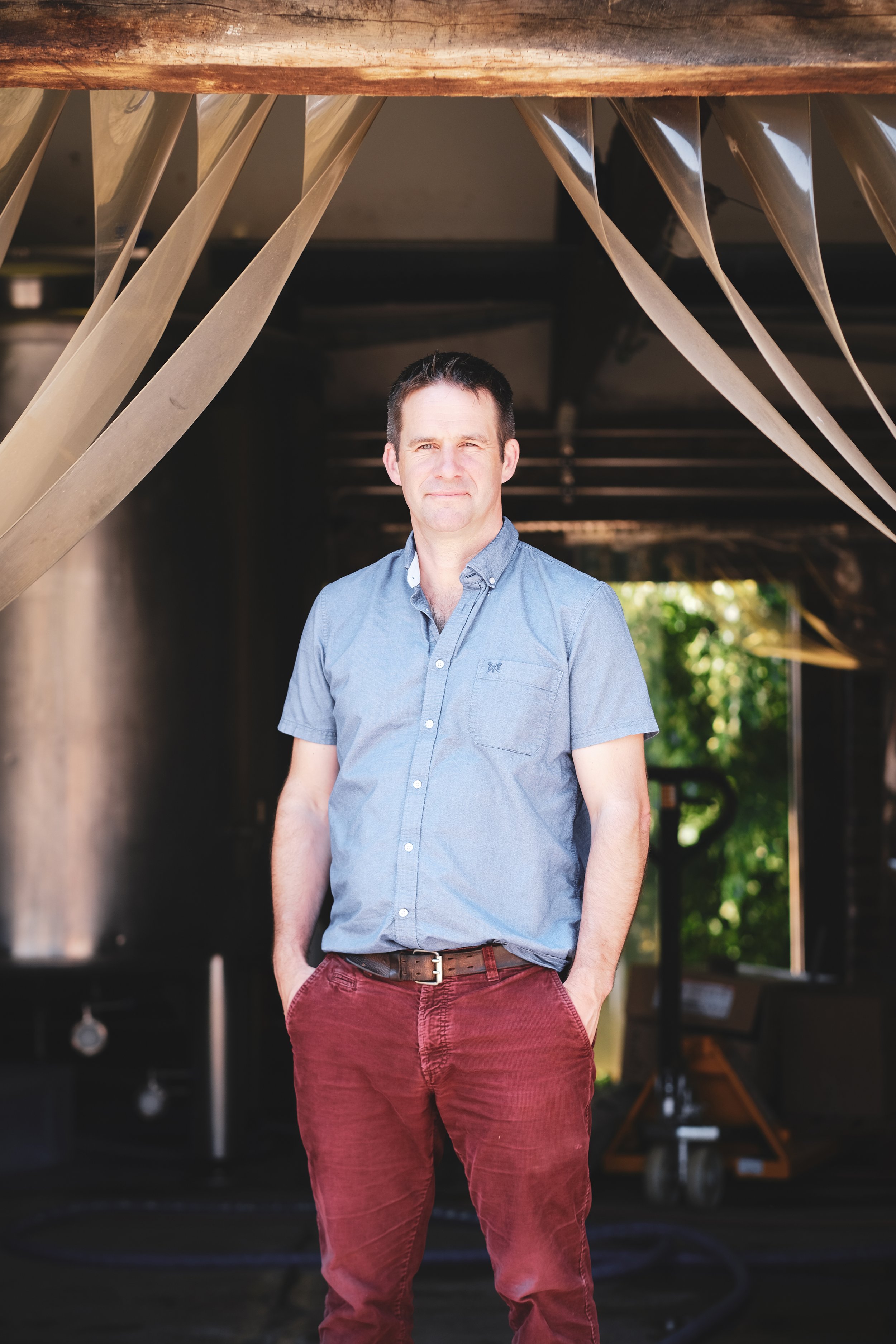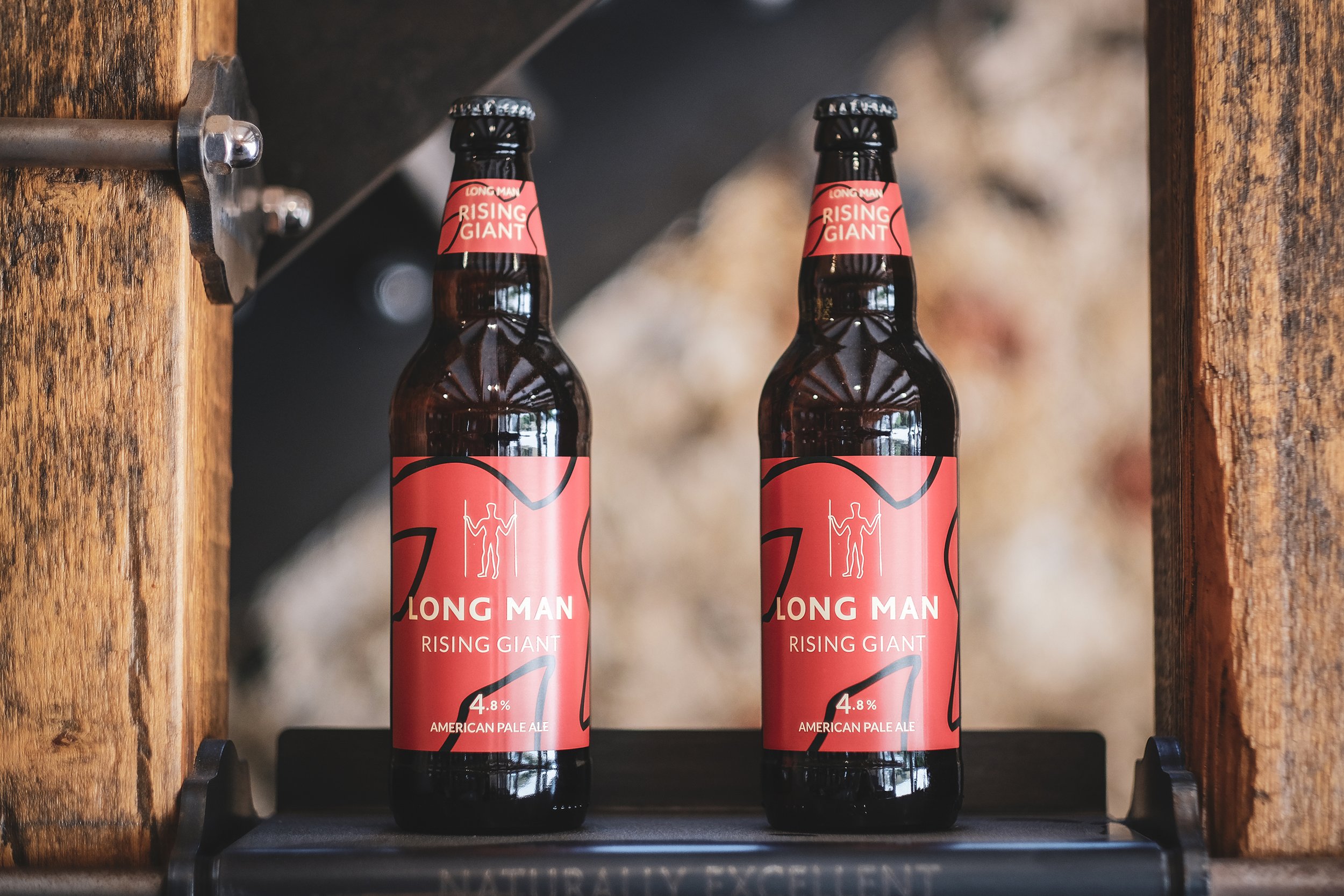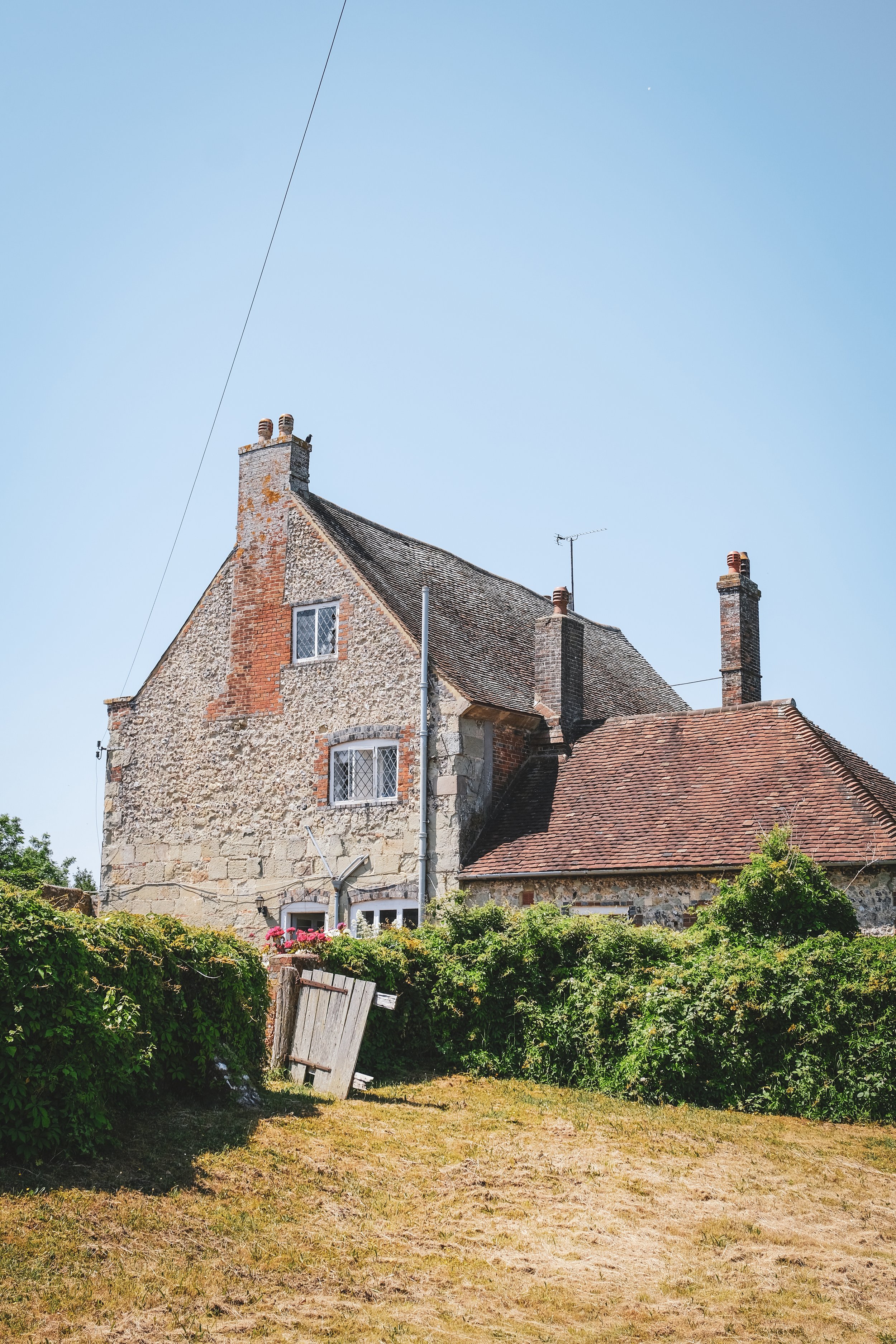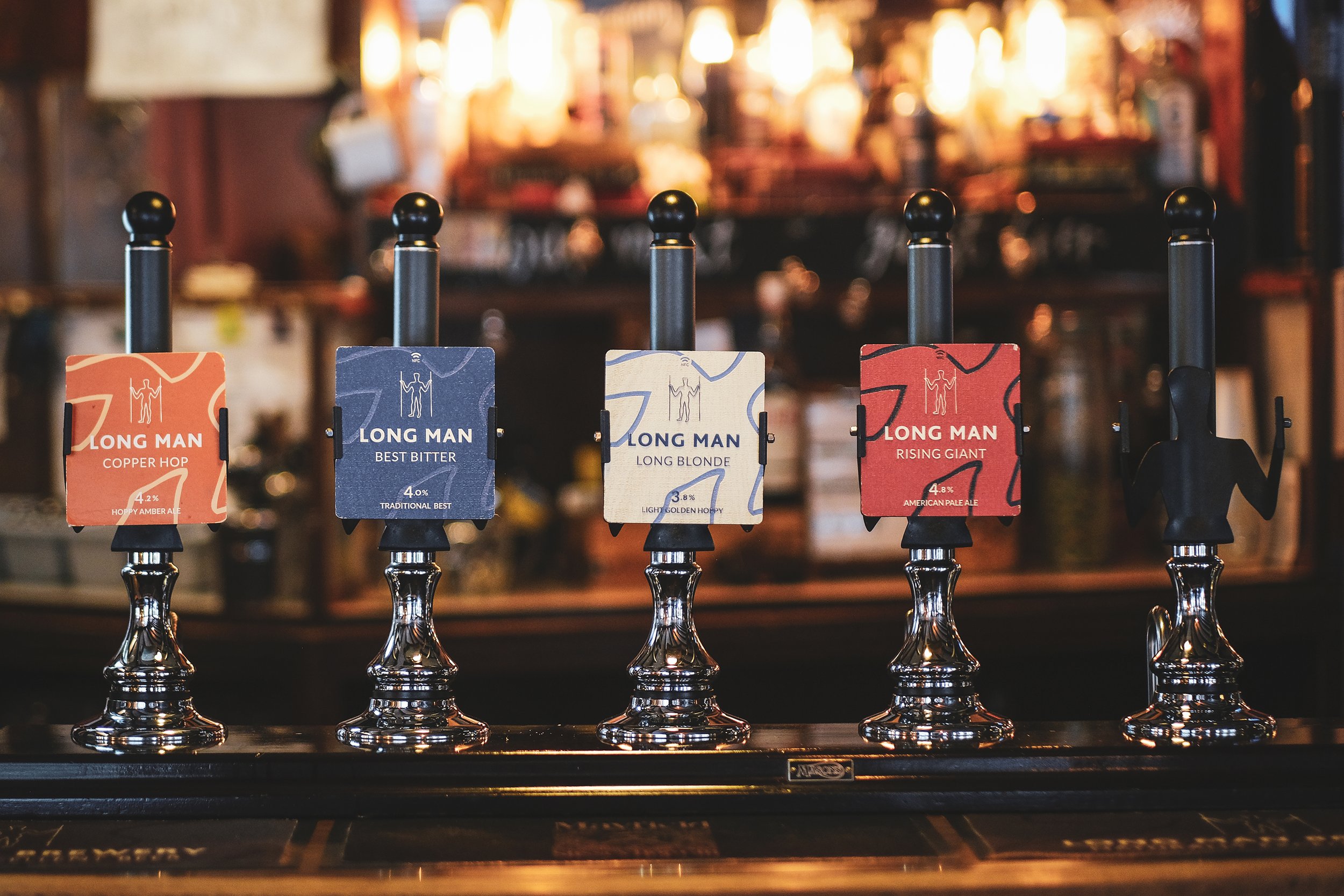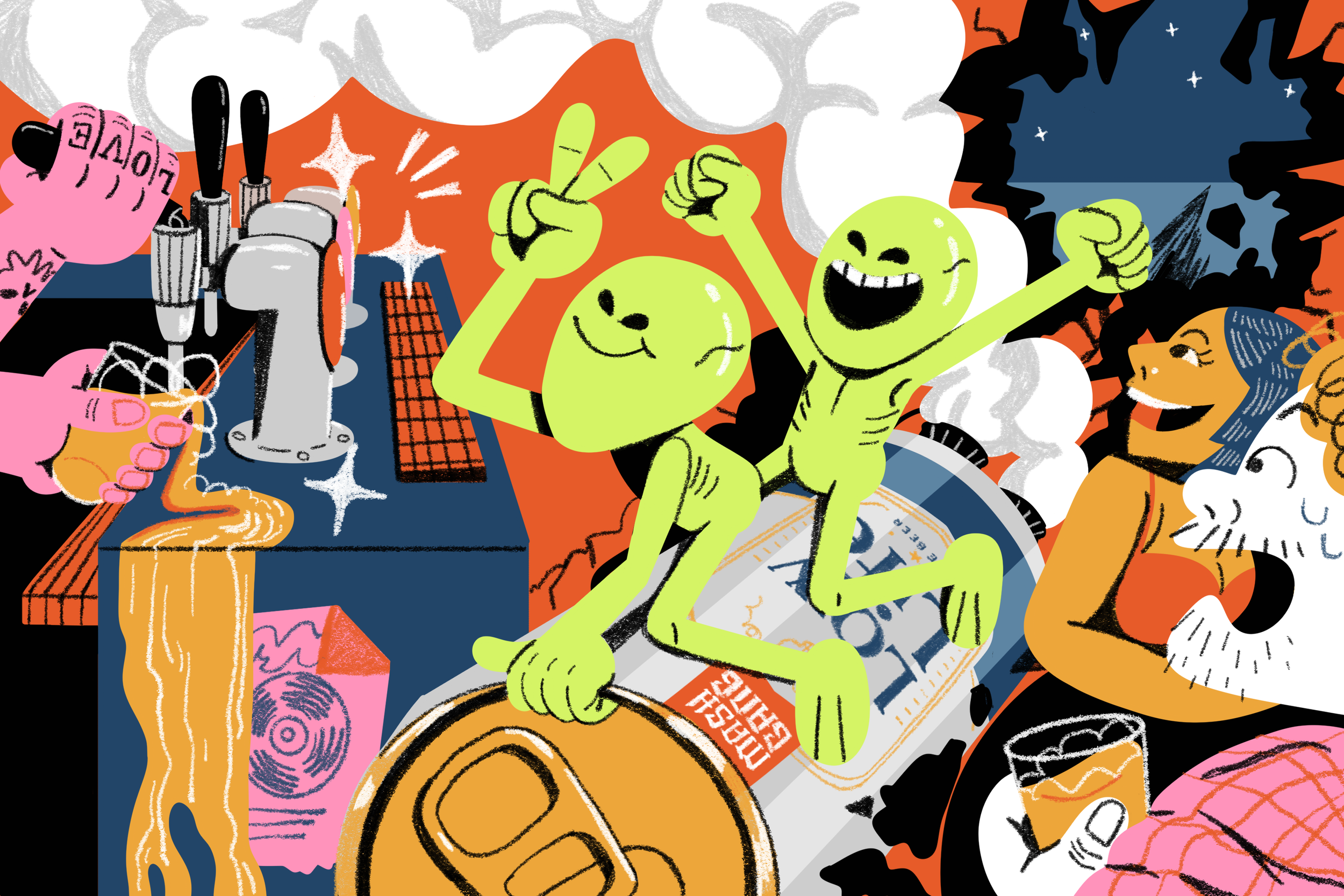Soil To The Sun — Long Man Brewery’s Regenerative Agriculture in Litlington, East Sussex
“I tell this to my children: I’m just feeding the worms,” Duncan Ellis says. “If you feed the worms, they’ll look after the soil.”
Across 3,500 acres on the South Downs, Duncan, the third-generation farmer at Church Farm in Litlington, East Sussex, grows oilseed rape, wheat, and barley, with much of the latter used for malting. In 2012 he co-founded Long Man Brewery on his farm, using his barley in all the beers. That’s a rare story on its own––Small Brewery Grows Own Malting Barley––but the real story is the way Duncan farms.
Photography by Lily Waite
By using regenerative farming techniques, which naturally improve soil health, soil ecosystems, and is better for global carbon emissions, “we can have environmental benefit and food in the same sentence,” Duncan says. “This is great for nature, great for biodiversity, and we can always eat.”
It’s also great as a way to tell stories which help people see farmland, and farming in general, as more than just fields of grain, sheep, and bales of hay.
***
“Show me a colour and I’ll remember it forever,” Duncan says. He considered enrolling onto a 3D art degree before committing to becoming a farmer like his father, uncle and grandfather before him. The creativity remained with him, and when working with his hands, or spending hours in his combine, his head fills with ideas, which he imagines in vivid colours and defined shapes. Talking to him, and following him around the farm, you get the sense that he doesn’t see it as the fields and barns that they currently are, but as what they will become—and how they can add greater meaning to this land which his family have managed since 1943.
Church Farm is a different place now to what it was when his grandfather took on the tenancy of the then-450 acre farm. Milk became the farm’s main source of income, and continued to be as Duncan’s father and uncle Pete took over the business, expanding their farming portfolio into arable crops, seeds and sheep. By 2008, producing milk was no longer a viable business, and they made the difficult decision to sell the cows. Most of the old milking sheds became redundant.
Duncan started working at Church Farm in 2000, at the age of 22, following a few years on a sheep farm in New Zealand. He came home and looked after his own flock of sheep and over time took on more responsibility with all other aspects of the farm. It was around the time the cows were sold that Duncan became more interested in an emerging way of farming known as regenerative agriculture. It revealed habitual problems in how current farming was trying to control nature, rather than being inspired by what nature wants to naturally do. Duncan saw potential for significant change.
“We want to hand it over better than we found it. That’s it,” Duncan says, of his approach to managing the farm now. “You need a resilient business. An engaging, resilient business.”
Would his grandfather have used the word engaging if asked that question many years ago? “Jeepers, no,” laughs Duncan. But this has become fundamental to Duncan’s approach as a farmer; it isn’t just about growing food in a way that’s better for the environment. It’s about doing things which allow him to tell stories to help people understand what’s going on in the fields, and, crucially, why.
But this whole ethos is complex, and Duncan sometimes finds it difficult to put words to the big, colourful ideas in his head, so he chooses to focus on the tangible, relatable things—“interesting nuggets,” as he’d say—which can engage people. That’s why he’ll talk about sunflowers, ponies, a woolly hat, growing pump clips, making pints of beer, or feeding worms.
And whatever the story, it always starts in the soil.
***
“We’re rebuilding our soil health that’s been ignored for the last 50 years because we’ve moved too much of it,” Duncan says. “Moving soil is bad for the planet.” It’s also bad for the plants.
““We’re going to grow green. By having permanently green fields, we’re permanently feeding worms.””
Plants take carbon dioxide out of the atmosphere through photosynthesis. They use some of this carbon to grow, and some passes through the plant’s roots as sugars and nutrients to feed soil biology, where bacteria, fungi and worms are the start of a complex set of interactions known as the soil food web. Sequestering carbon underground and building soil organic matter ultimately helps to reduce global carbon emissions—and grow more resilient plants. But current farming practices are enormously disruptive to the soil.
After World War II, British farmers were paid subsidies by the government to plough more fields in order to grow more food, and they’ve continued doing it ever since. Ploughing prepares fields for the next harvest, but every time that land is ploughed water evaporates or runs off, nutrients leach out, carbon is released, and the ecosystem of worms and other organisms is significantly harmed.
“I’m not saying ploughing is wrong, because it’s been done forever,” Duncan says, “I’m just saying that by thinking differently, you can have a massive impact on the landscape in a positive way.”
Naturally improving soil health is the foundation of regenerative agriculture, and Duncan’s first significant development on the farm was to introduce a no-till system to plant seeds without ploughing, gently slicing through the soil, putting in the seed, then moving back any minimal topsoil disturbance. Now he can plant 10-times faster than before, disturb much less soil, and hugely decrease diesel costs and emissions.
“We then wondered, what if we have permanent soil cover?” he says. One of the main principles of regenerative farming is to have constant soil cover, because you never see bare soil in nature. “We’re going to grow green. By having permanently green fields, we’re permanently feeding worms.”
Duncan harvests his spring barley in July or August. “In the old world that field would have nothing growing in it until the following spring. Six months of the soil doing nothing. Basically starving it,” he says. Now he’s immediately replacing his barley or wheat with a companion cover crop, and he’s effectively farming sunlight in those previously dormant months.
“We’ve got all this free energy in the sun that we were wasting,” he says. “Why wouldn’t we just grow carbon? We can lock carbon up underground, which is where we want it, and then the worms are chuffed.”
***
“We call it a pop-up rainforest, but farmers would know that as a cover crop,” says Paul Rhodes, director of Future Food Solutions, who work with large breweries and food producers to develop sustainable supply chains. “It’s a team of plants that work complementarily to each other. A complimentary leaf structure to optimise photosynthesis and the amount of carbon dioxide they can take out of the atmosphere.”
The cover crop has the whole of autumn and winter to get carbon into the soil. “They’re an unusual set of plants that grow well in cool temperatures and shortening day lengths, so things like radishes, phacelia, quite a few clovers, which can sequester nitrogen [taking it out of atmosphere and making it available to next year’s crop,] reducing the need for artificial fertilisers,” Paul tells me, which is key—man-made fertilisers contribute around 50% of the carbon emissions involved in growing grain.
“These cover crops are very good at scavenging nutrients from the soil, so any nutrients left over from the previous crop can be captured,” he says, adding that the root structures of dead plants ends up as embedded carbon in the soil. “We describe it as climate-smart farming.”
The real-world importance is that this is essential to reduce global carbon emissions without impacting yield. “One of the best ways to [remove carbon] is to use plants. For plants, carbon dioxide is food,” Paul says.
And barley is one of the easiest plants to apply regenerative farming processes to because between harvests, the summer is a “window to take carbon out of the atmosphere.”
***
Everything in the cover crop has a natural purpose.
“We know that clovers can take nitrogen out of the air and stick it in the soil for free. That’s a cool thing,” Duncan says. “We know that phacelia is amazing as a soil conditioner. Buckwheat is amazing at scavenging phosphate out of the soil. We know that planting linseed with oilseed rape is amazing at deterring pigeons.”
Beans are great for soil conditioning. Oilseed rape mops up surplus nitrogen left in the soil from the previous crop. Turnips grow well through winter, help soil fertility, and make good sheep food, which is helpful when the farm has a peak of some 3,000 sheep a year (plus beef cows and ponies). Those animals are also crucial to soil health and regenerative farming: animal grazing damages the plants which puts more carbon into the soil and causes the plants to draw nutrients––cycled through the worms and bacteria––to grow back.
Most of the cover crop won’t survive the winter frost––oilseed rape and turnips are an exception, and he wants them to continue growing––and that’s a good thing because then he doesn’t need to use a herbicide on them. And because a dead plant above ground gives lots of good organic matter for the biology below ground.
All this means that by February, when Duncan begins to plant his arable crops, “a truckload has gone on before you’ve even talked about the barley.”
But talking about a field of barley isn’t something that many people engage with.
***
Long Man Brewery is named after the Long Man of Wilmington, an iconic old chalk figure that’s on Duncan’s farm. “The barley’s grown under his watchful gaze,” Tom O’Neill, Long Man Brewery’s sales director tells me.
In 2011, Duncan was approached by Steve Lees, director of drinks distributor H. T. White & Co. (now part of LWC Drinks), and the conversation went something like: “I have a beer and wine distribution business, you grow barley and have some lovely old sheds,” Duncan recalls.
The whole idea was founded on the barley. That appealed to Duncan’s ear for a good story, and his vision of making farming more accessible and understandable; a pint of local beer could become the product through which he could engage more people.
Long Man Brewery sold its first casks of Long Blonde—a beer brewed using Church Farm pale malt and zesty Cascade hops—in April 2012. That beer is now part of a well-established core line-up including their Sussex-style best bitter, Old Man dark ale, Rising Giant American pale ale and a newer range of kegged pales and a pilsner.
“The quality of the beer is a given,” Duncan says, knocking superstitiously on the table. “If we continue to get that right, we’re able to focus on the story of the barley.”
On the farm, the barley is harvested and then goes to Warminster Maltings in Wiltshire, where it’s floor malted. The brewery then buys back what they need for their beer (a transaction which makes Duncan wish he could build a maltings on the farm, as records show there was in the 19th century). Around 80% of the malt used to make Long Man beer is Church Farm pale malt, with additional speciality and roasted malts coming from other farms. And barley is just one part of Long Man’s focus on sustainable brewing.
The brewery is powered by solar panels on the grain barn’s roof. Their water is drawn from the most significant aquifer on the South Downs, and it’s naturally filtered through chalk on its way to the brewery. When wastewater leaves the brewery, it passes through an extensive treatment plant and then irrigates the fields and helps the barley grow. The farm’s herd of beef cows eat the spent grain, and spent hops go to compost (feeding some different, but no less important, worms).
The brewery itself is inside a 200-year-old farm building on one side of the village road, and when they added a brewery shop and tasting room Duncan renovated the old cow stores and milking sheds on the other. This has made the brewery a destination, a place for people to learn more about the beer or the farm—or just to pick up some takeaway beers. Whether they arrive by car, or stop off on a walk or bike ride over the South Downs, they’ll pass Duncan’s barley fields on the way.
And there’s more than just beer at Church Farm. There’s Cadence, an externally run coffee shop housed in a shipping container, and independent local businesses and individuals rent space in the old cow sheds, with some retaining a nice link to the previous inhabitants: Liquid Spirit Coffee Roaster, Holy Cow! Ice Cream, and some artists, including John Marshall, otherwise known as ‘The Cow Painter’.
““The quality of the beer is a given. If we continue to get that right, we’re able to focus on the story of the barley.””
Church Farm’s transformation has given the old farm buildings a new purpose. “We hear about ‘natural capital’ now,” Duncan says. Outside spaces and landmarks, walking trails, old farm buildings, varied plant and animal life—these all have the potential to become new kinds of assets.
“Although we’re making food, we’re also trying to make an environment for people to go and walk and see and understand, and that has its own value,” Duncan says. That’s not intrinsically a financial value; it’s an emotional one which influences many decisions around the farm.
That’s why he plants sunflowers in his cover crop. They naturally add to the soil health, but the main purpose is that people always notice them, unlike barley and wheat which are such familiar sights they’re usually ignored. Duncan also runs over 100 Exmoor ponies on the farm.
“We talk about givens,” he says. “We don’t need to talk about the fact that the ponies are great at restoring chalk grassland, because they just do. [Or] the fact that we’re trying to safeguard the breed, we just are,” he says. “The interesting piece for me is that people like to see them, and it engages them. That gets people out, gets them understanding nature.”
It’s why you can buy pints of Long Man beer and drink them outside the brewery, looking out over South Downs, with its butts and brows, and white chalk paths well-worn into the rolling green land.
When Duncan thinks about all of this, he asks: “How many other brewing businesses can talk about conservation, regeneration, farming, soil health, education, and field to glass effectively in one sentence?”
***
To many people, regenerative farming may seem obvious: better soil means better plants and a better consideration of the environment. The key principles of not ploughing, having constant green on the fields, letting animals graze the land, and using minimal chemical intervention, just make sense (Duncan isn’t running an organic farm so still judiciously uses certain chemical products). But, Duncan says, this whole approach “challenges 50 years of convention, 50 years of assumed constraint.” Many farmers are reluctant to change.
Thankfully, Duncan’s father and uncle could see how this could improve the quality of their soil, and increasingly other farmers, including numerous backed by British and Irish breweries, are embracing the importance of regenerative farming.
Guinness is investing in regenerative barley with farmers across Ireland, while Heineken are also working with Irish farmers on a pilot programme. Carlsberg Marston’s Brewing Company partnered with 23 UK farmers in 2023 to grow barley using regenerative farming (growing enough to brew up to 96 million pints of beer in 2024), with the longer term aim of exclusively using barley grown this way in its brands by 2031 (and by 2027 for its flagship Carlsberg Danish Pilsner). Osaka-based drinks producer Suntory have worked with Suffolk-based maltings Muntons to explore growing barley using regenerative techniques.
Like Long Man, Wold Top Brewery in East Yorkshire is based on a farm where they grow their own malting barley, and they have been using regenerative farming since 2018. “We are helping to stabilise the land,” says Kate Balchin, the brewery’s director and fourth-generation on the farm. She explains that “organic material in the soil has increased twofold over five years by naturally letting straw and cover crops compost into the soil.”
For Wold Top, one of the big environmental benefits is that ploughing previously meant eight passes over each field, now it’s just two: one for the cover crop, one for the barley. That means less fuel use, less carbon dioxide given out by the tractors, plus the many other benefits of keeping more carbon underground. And while Kate says “Regen-blah-blah!” is something she still hears from other farmers, “we’ve found that actually people have been quite accepting of it, even if they say it's not for them.”
“Regenerative” has become an important buzzword in farming, but if there are still farmers who aren’t committing to change, then how can the general consumer understand it better when they also see other big idea terms like “sustainability” and “rewilding”?
“No, I’m not rewilding!” Duncan says, head shaking as if he’s about to thump the table in front of him. What’s rewilding, then? “Neglect,” he says. Just leaving the land to itself to try and heal. There’s certainly a place for that, he says, but this is farming to produce food.
Sure, it’s about sustainability, but perhaps that needs re-framing because current farming practices are not sustainable. First there needs to be change––there needs to be an era of regeneration––and once that’s happened, it can be sustained. If this all succeeds then the next generation of farmers will be able to take a new and genuinely sustainable approach to growing food, and making the planet healthier.
***
The best harvest Duncan can remember was 2022, and that was a year of extreme heat and drought. Maybe it was because 2021 was the “worst in a generation” harvest (and 2020 wasn’t much better) which left lots of nutritious roots and organic plant matter to feed the worms; maybe it was the good weather they had when planting the seeds; maybe more than a decade of regenerative farming has made the land more resilient.
“We were less exposed than we might have been,” Duncan says. It seems a down-played answer, but farming has no guarantees.
“We only get 60 goes at it,” he says. That’s 60 years of work, 60 harvests. “And they’re never the same. What we’re really doing is de-risking it.” It’s impossible to predict what might happen; Duncan is attempting to reduce the chances of failure by improving the quality of the land. That’s something he’s doing for his grandfather, his father and uncle, and for whoever comes next.
“Because of the people who came before us, we have the opportunity to earn a living off of [the land],” Duncan says. “It’s a silly thing though, isn’t it…” he trails off. “It’s taken me 20 years to work out where the opportunities are, and we’re only just getting going.”
And he’s got lots of ideas; lots of colourful shapes in his imagination.
“I want to grow our own pump clip, I want to grow a beanie,” he says. “I want to do some more bean beers.” He explains how he wants to plant varied trees and apply the same principles as he does with the arable crops, and then turn the wood into tap badges, and his vision for turning his sheep wool into hats.
He explains, too, how a few years ago Long Man brewed a beer using cover crop beans. “We sampled it to drinkers without telling them it was brewed with beans and they liked it,” he says (though he admits they took some convincing when they knew it was made with beans).
“Beans are well-known for being non-profit making,” Duncan says, but they’re really good as a soil conditioner, which is fundamental to regenerative farming. “So we put beans in a lot of our cover crop because they’re great at moving free nitrogen.” The beans will grow, and they can be picked, and Duncan’s first thought is always about how he could do something interesting with them.
“Everything we grow here, we can look at it and add value to it,” Duncan says, and he can use those plants to tell engaging stories which build up a broader narrative of what modern British farming can be.
***
There’s one question which is unanswered: what does this do to the flavour of the beer? Duncan takes a moment to answer, frowning as he thinks of the right word.
“Nothing,” he says.
He thinks some more, then shakes his head as if confirming the answer to himself. “Nothing. It’s not necessarily about that,” he says. “It’s the ethos that’s gone into building it so you can talk about having environmental benefit and food in the same sentence. That’s the point of it.”
Regenerative farming is the underlying process and ethos that Duncan practises to grow good food, and he uses tangible things like pints of beer to help others engage in the land in new ways, and understand why regeneration matters.
The question about beer flavour seems to be bothering him, and he returns to it. “Do you find it disappointing to hear that?” he asks, before continuing. “It’s not about beer flavour. We’d get found out very quickly if we claimed otherwise. I think we’d be inauthentic trying to suggest otherwise.”
“We are authentic,” he says, pausing, cringing slightly at his own words. “Authentic’s a funny word, isn’t it? Sometimes it’s a bit twee, but it’s not. It’s just real. We do what we say we do, for the right reasons.”
If it’s not about beer flavour, then what does this do to the barley? “It’s not the barley,” he says. “It’s the soil.” If the soil is healthy, the barley has a better chance to grow well. “It’s all about the soil.”



